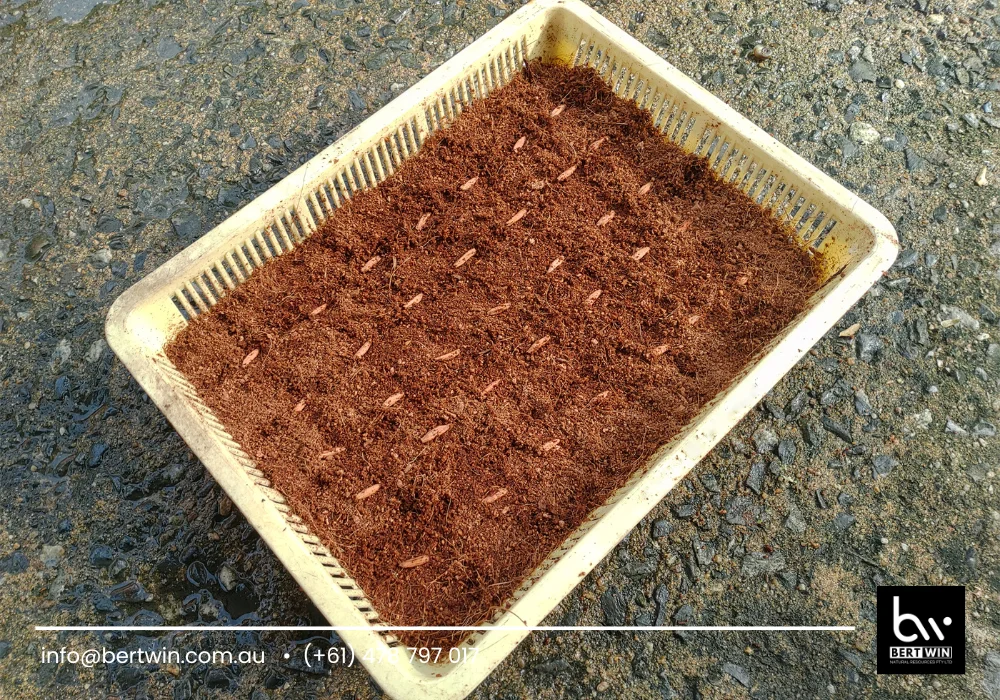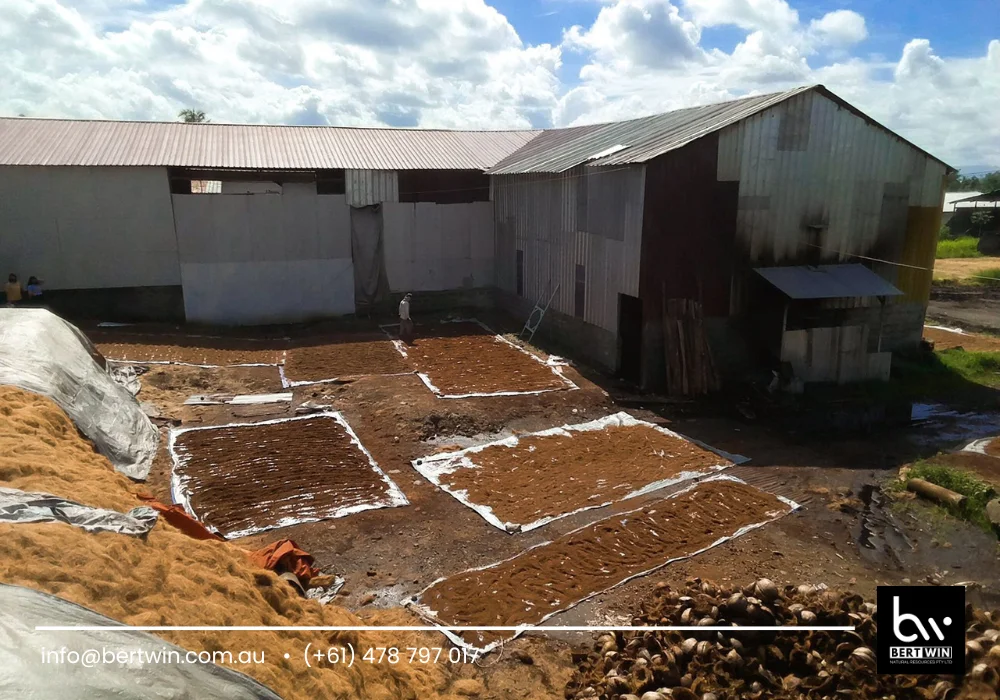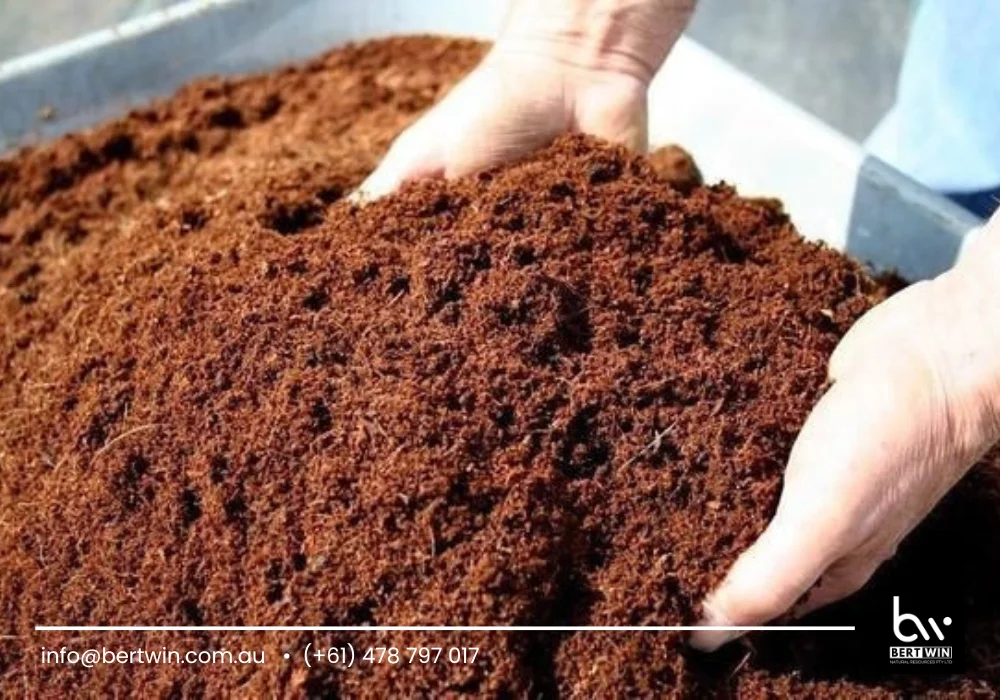Coco peat for outdoors is becoming increasingly popular in Australia for its versatility and eco-friendly benefits. Derived from the husks of coconuts, coco peat is a natural, sustainable material that is perfect for a wide range of outdoor gardening applications. Whether you’re a hobbyist gardener, a landscaper, or a professional grower, using coco peat for outdoors provides excellent results. This article will explore the numerous benefits of coco peat, its uses, and why it is an ideal solution for outdoor gardening in Australia.

What Is Coco Peat for Outdoors?
- Coco peat for outdoors is made from the fibrous husks of coconuts, which are processed and compressed into a lightweight material. The fibers are then treated to create a natural, breathable medium that is ideal for improving soil structure and supporting plant growth.
- Coco peat is also known as coir pith, and when used for outdoor gardening, it provides multiple benefits such as water retention, aeration, and nutrient retention for plants.
- In Australia, coco peat for outdoors is popular for its eco-friendly and sustainable properties, as it is a byproduct of the coconut industry and is biodegradable.
Benefits of Using Coco Peat for Outdoors
- Water Retention
- One of the key benefits of coco peat for outdoors is its ability to retain water. It can hold up to eight times its weight in water, which makes it an excellent choice for gardeners looking to conserve water and keep their plants hydrated, especially in dry or drought-prone regions like Australia.
- This water retention ability helps reduce the frequency of watering, making it a cost-effective and environmentally friendly solution for outdoor gardening. By retaining moisture in the soil, coco peat ensures that plants have access to water throughout the day, even during periods of minimal rainfall.
- Improved Soil Structure and Aeration
- Coco peat for outdoors is highly effective in improving soil structure. It helps break up compacted soil, allowing for better root development and water infiltration. This is especially beneficial for heavy clay soils, which tend to retain too much moisture and can lead to root rot.
- The light and fluffy texture of coco peat improves aeration, which helps prevent waterlogging and promotes healthy root growth. Healthy roots are crucial for nutrient uptake, and coco peat’s ability to promote strong root systems enhances the overall health of plants in outdoor settings.
- Sustainability and Eco-Friendliness
- Coco peat for outdoors is an environmentally sustainable choice compared to other soil amendments. Unlike peat moss, which is harvested from non-renewable bogs, coco peat is a renewable resource. The process of converting coconut husks into coco peat reduces waste and gives a second life to materials that would otherwise be discarded.
- The use of coco peat in outdoor gardening supports sustainable agricultural practices and reduces reliance on synthetic fertilizers and other environmentally harmful products.
- Nutrient Retention
- Coco peat for outdoors is a great medium for retaining essential nutrients in the soil. It has a high cation exchange capacity (CEC), which means it can hold onto and release nutrients like potassium, calcium, and magnesium. This helps ensure that plants receive a steady supply of nutrients over time.
- This nutrient retention also reduces the need for frequent fertilization, making coco peat a low-maintenance option for gardeners who want to promote healthy plant growth without excessive chemical inputs.
Applications of Coco Peat for Outdoors

- Outdoor Planting and Soil Amendment
- Coco peat for outdoors is ideal for improving garden beds, particularly for plants that require well-draining, moisture-retentive soil. By mixing coco peat into garden soil, you can create an environment where roots can thrive and absorb nutrients effectively.
- Whether you’re planting flowers, vegetables, or shrubs, coco peat provides a balanced medium that supports strong plant growth. It also helps maintain consistent moisture levels in the soil, which is crucial for plant health, especially in areas with fluctuating temperatures.
- Raised Garden Beds and Containers
- Coco peat for outdoors is often used in raised garden beds or containers due to its lightweight properties. It makes an excellent growing medium for container gardening because it helps prevent the soil from becoming too compacted.
- When mixed with compost and other soil amendments, coco peat helps create the perfect environment for growing herbs, vegetables, and flowers in pots and raised beds. It can be used on its own or in combination with other organic materials to create a well-balanced, aerated growing medium.
- Mulching and Ground Cover
- Coco peat for outdoors can be used as mulch in garden beds and around plants to help conserve moisture, suppress weeds, and regulate soil temperature. It acts as a natural insulator, keeping soil cooler during hot days and warmer during cooler nights.
- By applying a layer of coco peat as mulch, gardeners can reduce water evaporation from the soil, which is especially useful in arid areas of Australia where water conservation is important.
- Erosion Control
- Coco peat is often used in erosion control applications, especially in areas with slopes or hills. When combined with other materials like coir netting or geotextiles, coco peat for outdoors can help stabilize the soil and prevent erosion caused by wind and rain.
- The ability of coco peat to retain moisture and improve soil structure makes it an ideal material for establishing vegetation and preventing soil loss in areas prone to erosion.
How to Use Coco Peat for Outdoors
- Preparing the Soil
- When using coco peat for outdoors, start by hydrating the coco peat bricks or blocks if they are compressed. Soak them in water for 20–30 minutes to allow them to expand and become loose and fluffy.
- Mix the hydrated coco peat into your garden soil in a 1:1 ratio to improve water retention and aeration. For container gardening, combine the coco peat with other soil amendments like compost or perlite to create the ideal growing medium.
- Maintaining the Coco Peat
- Regularly check the moisture levels of the soil in which you have incorporated coco peat. Coco peat helps retain moisture, but it still requires periodic watering, especially in hot, dry conditions.
- Coco peat can last for several years in the soil before needing to be replaced. However, it’s important to monitor the soil for any signs of compaction or nutrient depletion.

Conclusion
Coco peat for outdoors offers a sustainable, efficient, and eco-friendly solution for gardeners in Australia. Whether you’re improving your soil, mulching garden beds, or enhancing your container gardening efforts, coco peat provides excellent benefits. With its water retention, aeration properties, and nutrient retention capabilities, coco peat is an ideal choice for anyone looking to improve the health of their outdoor plants while supporting sustainable gardening practices.
For further information, you may contact WhatsApp at (+61) 478797017 or via email at info@bertwin.com.au.
